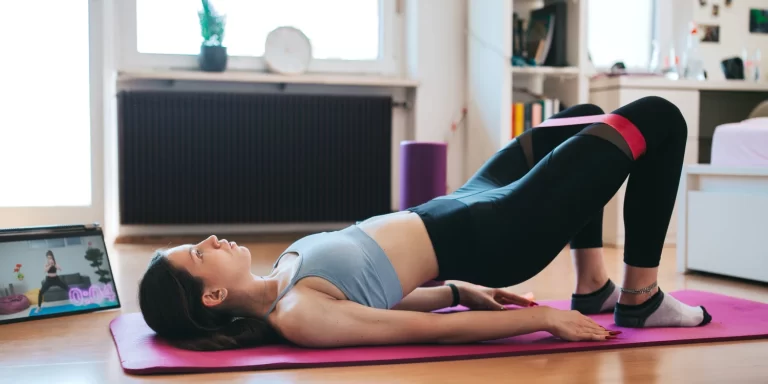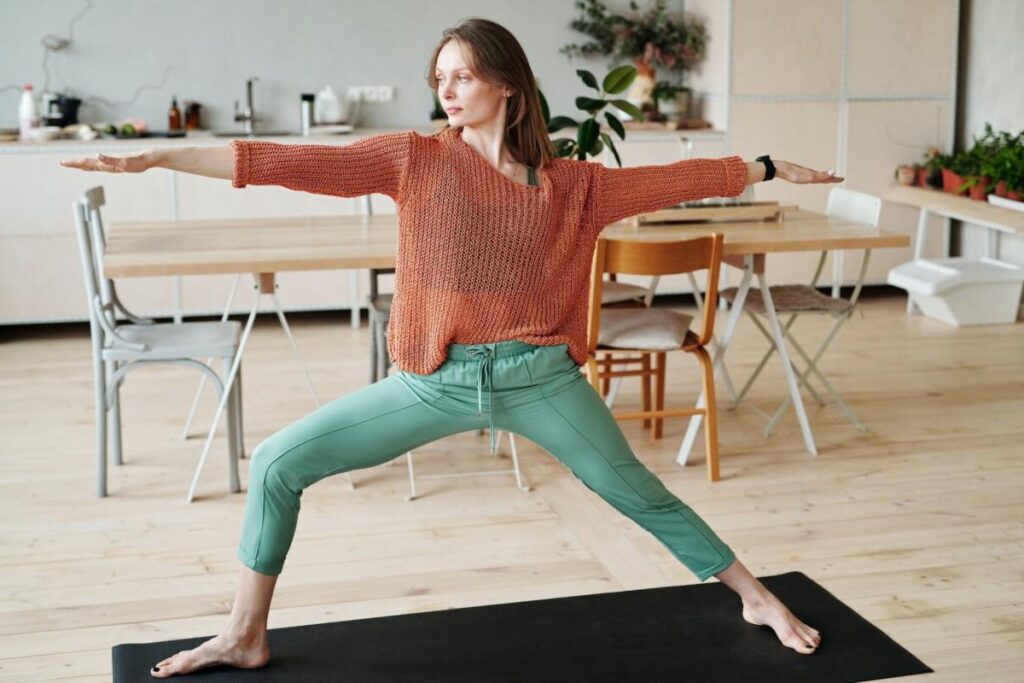
Table of Contents
ToggleIntroduction
Isn’t it true that a healthy individual has a better chance of achieving success in life? People today work so hard to succeed that they neglect to take care of their health, which is the most vital aspect of life. People who live in this fast-paced world experience stress and mental collapse. Both physical and emotional health are being negatively impacted by this lifestyle.
High blood pressure, diabetes, thyroid disorders, and other issues are among the numerous that are currently growing more prevalent. It is essential that there be some sort of physical activity to prevent such issues. Yoga for healthy living can be a terrific approach to maintaining both mental and physical health. The basic goal of physical activity is to promote blood circulation throughout the body.
One such workout that has no age constraints is yoga. It is straightforward but efficient. The Sanskrit word “Yuj,” which means “to unite or to integrate,” is the origin of the word yoga. It is an ascetic and spiritual practice that dates back to ancient India. Through a variety of breathing techniques, yoga postures, and meditation, it is a way to bring the body, mind, and breath into harmony.
Maintaining a healthy lifestyle is essential for overall well-being, and yoga offers a holistic approach to achieving and sustaining a healthy mind and body. With its combination of physical postures, breath control, meditation, and ethical principles, yoga provides numerous benefits that contribute to a balanced and healthy life. In this article, we will explore how yoga can help you maintain a healthy lifestyle and improve various aspects of your well-being.
-
- Physical Fitness:
Regular yoga practice enhances physical fitness by improving strength, flexibility, and balance. The various yoga Asanas (poses) work on different muscle groups, promoting toned muscles, improved posture, and increased stamina. Yoga also helps in weight management by boosting metabolism and aiding in fat burning.
- Physical Fitness:
-
- Stress Reduction:
In our fast-paced modern lives, stress has become a common problem. Yoga offers effective techniques to manage stress and promote relaxation. Through deep breathing exercises, meditation, and mindful movement, yoga activates the parasympathetic nervous system, reducing stress hormones and inducing a state of calm and relaxation. This can have a positive impact on mental well-being and overall health.
- Stress Reduction:
-
- Mental Clarity and Emotional Well-being:
Yoga not only focuses on the physical body but also nurtures mental clarity and emotional stability. Regular practice helps quiet the mind, improve focus, and enhance mental clarity. It can also reduce anxiety, depression, and negative emotions by promoting self-awareness and a positive mindset. The combination of breathwork and meditation cultivates mindfulness, allowing individuals to better manage their thoughts and emotions.
- Mental Clarity and Emotional Well-being:
-
- Healthy Eating Habits:
Yoga encourages mindful eating, which involves paying attention to the present moment and making conscious food choices. By practicing awareness and tuning into the body’s needs, individuals can develop a healthier relationship with food, make nourishing choices, and avoid overeating. Yoga also promotes a deeper understanding of the body’s hunger and satiety signals, leading to more balanced and mindful eating habits.
- Healthy Eating Habits:
-
- Improved Sleep Quality:
Sleep is crucial for overall health, and yoga can contribute to better sleep quality. Relaxation techniques, such as gentle stretches, breathing exercises, and meditation, can help calm the mind and relax the body before bedtime. Regular yoga practice can reduce insomnia, improve sleep duration, and enhance the overall quality of sleep, resulting in increased energy and vitality during the day.
- Improved Sleep Quality:
-
- Enhanced Self-care and Self-awareness:
Yoga encourages self-care and self-awareness, emphasizing the importance of taking time for oneself. Through yoga, individuals learn to listen to their bodies, understand their limitations, and practice self-compassion. This awareness extends beyond the yoga mat and influences lifestyle choices, leading to healthier habits, such as adequate rest, self-care rituals, and setting boundaries.
- Enhanced Self-care and Self-awareness:
People who practiced yoga hundreds of years ago lived a long time without experiencing any health issues. Yoga instruction can resemble learning a new language and culture. Yoga requires a serious commitment. Breath, posture, focus, and movement are all important. The key to yoga is flexibility. It could feel a little tricky at first, and your body might not be very flexible.
Although it may appear challenging, it is the most delicate and successful approach to promote flexibility. After frequent practice, yoga for healthy living becomes a part of your healthy lifestyle. Endorphins are hormones that assist maintain the body and mind peaceful, clear, and energized throughout the day, and concentrated breathing can help release them. The benefits of yoga practice are numerous.
Here are two advantages of yoga:
-
- Beneficial in reducing weight and relieving back pain
- Relaxes the body and mind and improves breathing, posture, self-control, and immunity. It also relieves stress and improves sleep quality.
It’s quite easy to incorporate Yoga into daily life. In essence, there are three sorts that eventually seek to calm the body and mind.
The following three styles of yoga:
1. Breathing Exercise:
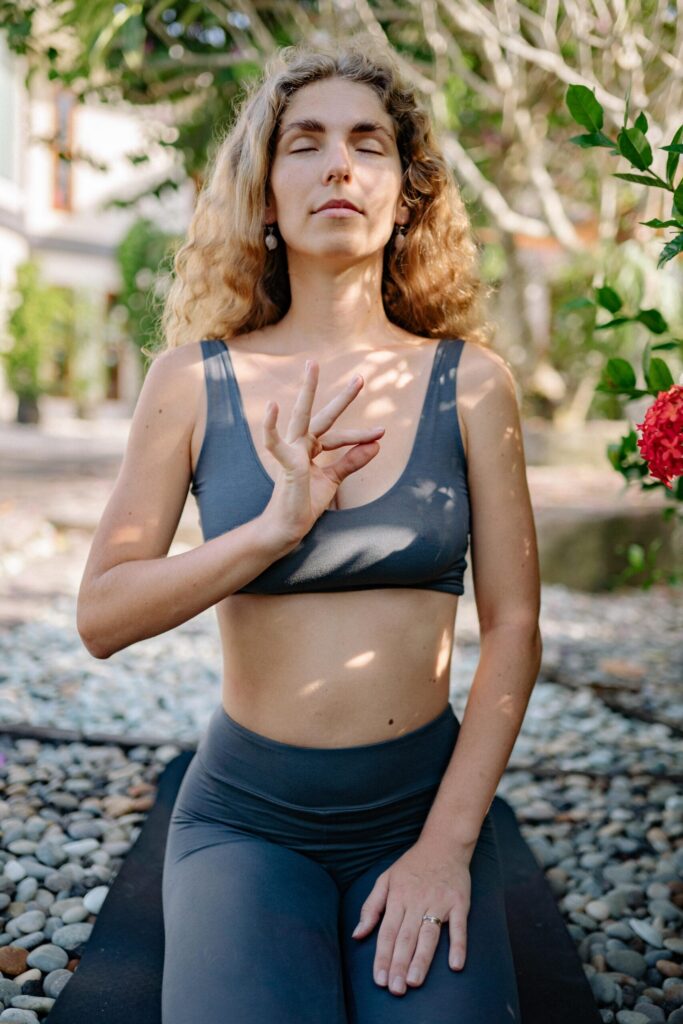
According to yogis, Pranayama is a formal method of breathing control. Paying attention to the breath and using different breathing techniques might help one achieve mental serenity. It aids in regulating and strengthening the body’s vital energy. One can begin with a few straightforward breathing exercises, such as:
- Nadi Shodhan Pranayama aids in improving focus. One should sit upright in Padmasana with an erect spine to begin this exercise. With your right thumb, cover your right nostril and take a deep breath through your left nostril. Follow the same steps in a different method. This exercise can be done for as long as you like. Starting with 3 to 5 minutes is ideal.

- Bhramari Pranayam, also known as bee breath, reduces stress and hypertension. Close your eyes as you sit in the Padmasana position. Place both fingers inside each ear and take a deep inhale. Make a loud buzzing sound as you exhale. Use this method several times.

- Clearing the body’s energy pathways and performing a cleanse have both benefited from Kapal Bhati. Start by closing your eyes and sitting in Padmasana. Take a long, deep breath to fill your lungs. Now aggressively exhale through your nose. Take 3 to 5 minutes at first.
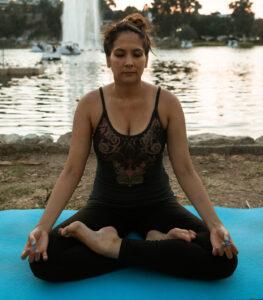
2. Yoga poses:
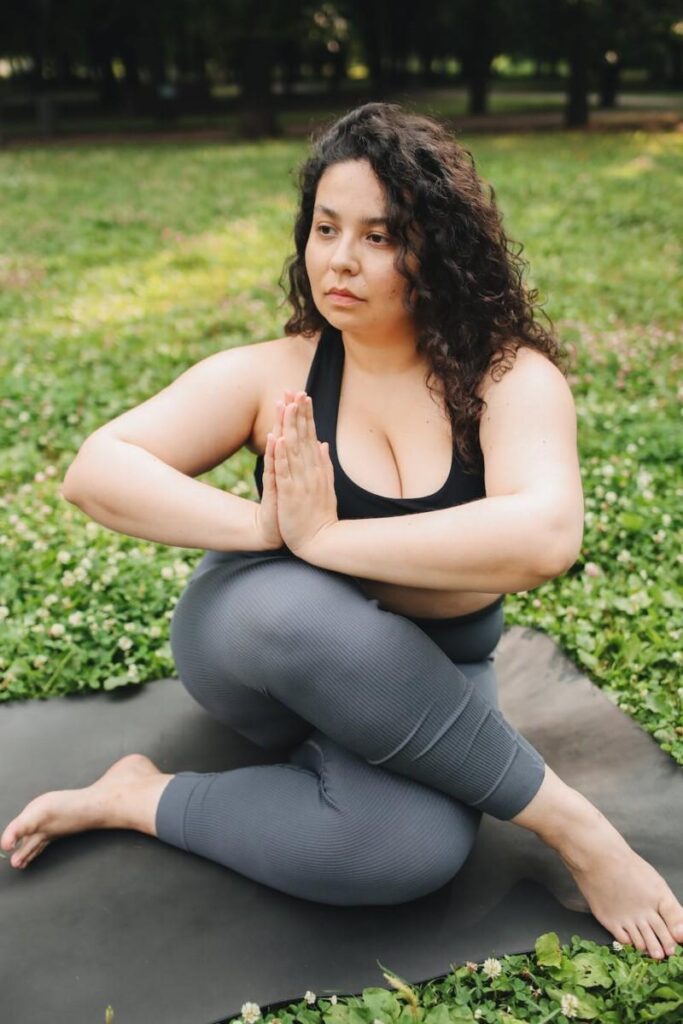
Yoga poses or Asanas can help with a variety of issues, including back discomfort and weight reduction. It also relieves physical aches and relaxes muscles. You can also work on your posture.
The Surya Namaskar, or Sun Salutation, is a technique for relaxing the entire body. It is quite beneficial for body wellness in general and weight loss. It consists of 12 fundamental yoga positions and involves the fundamental breathing method.
The Triangle Pose, also known as Trikonasana, also aids in reducing belly fat. Strength and flexibility are necessary. Start by assuming a wide-eyed stance. The right foot should be extended at a 90-degree angle. Holding the right leg close to the body, inhale. Bend the right arm and touch the ground while exhaling. Ensure that the left arm is straight and pointing towards the right hand.
As many times as you can, repeat these steps.
Here are some other examples:
- Ashwa Sanchalanasanasanas or the Equestrian Pose
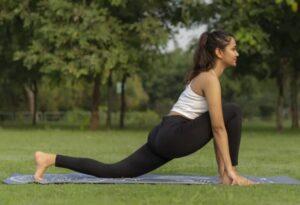
- Hasta Uttanasana or the Raised Arm Pose

- Hastapadasana or the Foot Pose
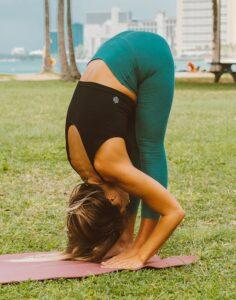
- Ashtanga Namaskara or the Salute with Eight Points
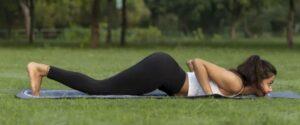
- Bhujangasana or the Cobra Pose

- Adho Mukha Svanasana or the Downward-Facing Dog Pose

- and Pranamasana or the Prayer Pose.

3. Mindfulness:

Meditation is a centuries-old practice that promotes mental clarity, increased focus, inner fortitude, and relaxation. It is beneficial to seek deep slumber in the right way. Anxiety can be reduced through meditation. Additionally, it works well for boosting immunity. An easy way to meditate is as follows:
-
- Find a time that works for you and a quiet location. Put on some relaxed clothing.
-
- Sit comfortably, keeping your spine straight, your shoulders back, and your neck relaxed.
-
- Shut your eyes.
-
- Breathe deeply a few times.
-
- Breathe normally.
-
- Now focus on your breathing and how the air enters and exits your body.
-
- Any meditation guide may also be employed.
-
- Keep going for 5 to 10 more minutes.
It’s recommended to keep the stomach mostly empty. The practice of meditation will assist in calming the body and mind. The person will remain active all day long.
Yoga is beneficial for the mind as much as the body. Not only does it keep one going during the day, but it also promotes restful sleep. One can mix and match the exercises based on the needs of all these diverse types. For instance, if someone wants to lose weight, he can concentrate more on yoga poses because yoga is known to promote healthy living. While someone who is experiencing despair or anxiety may want to concentrate more on breathing techniques or meditation.
THE ALPINE SECRET FOR HEALTHY WEIGHT LOSS!
Conclusion
Incorporating yoga into your daily routine can significantly contribute to maintaining a healthy lifestyle. Its physical, mental, and emotional benefits make it a powerful tool for holistic well-being. By practicing yoga regularly, you can improve your physical fitness, reduce stress, cultivate mental clarity, develop healthy eating habits, enhance sleep quality, and nurture self-care and self-awareness. Embrace the transformative power of yoga and embark on a journey towards a healthier and more fulfilling life.






